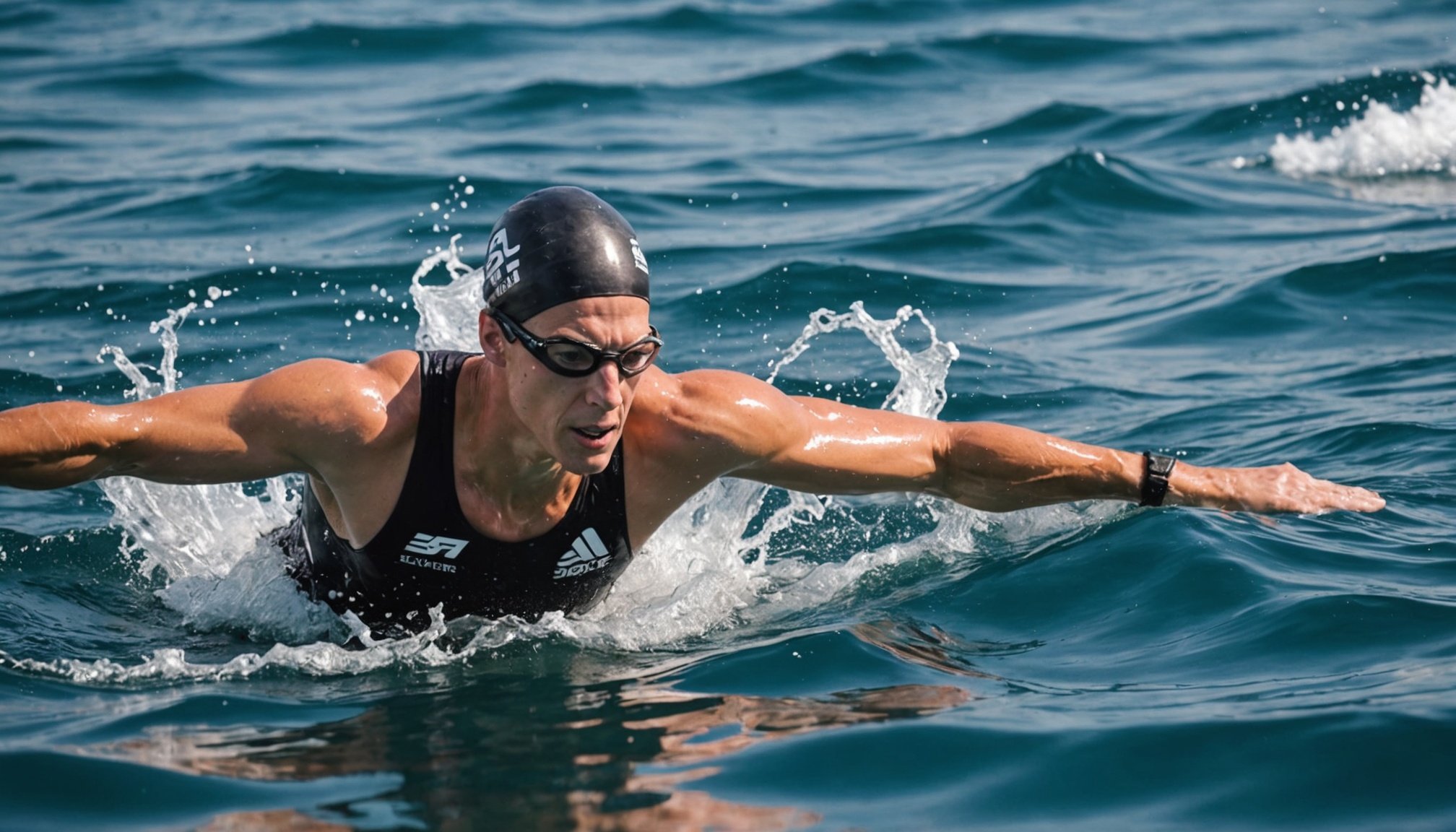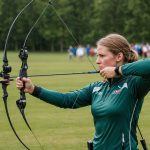Advanced Training Techniques for Open Water Swimming
Elite swimming demands a unique set of skills that go beyond the poolside. Open water swimming techniques require adaptability and resilience. Elite swimmers enhance their performance by employing tailored practices that suit the challenging conditions of open waters.
A hallmark of elite swimmer training is the creation of personalized training plans. These plans are crucial as they cater to individual strengths and address areas needing improvement. Such plans often incorporate a mix of endurance workouts, speed drills, and strength conditioning, ensuring comprehensive skill development.
Also read : Boosting cardiovascular endurance: innovative cross-training techniques for competitive rowers
An effective training regimen also involves integrating both pool and open water experiences. The controlled environment of a pool facilitates the honing of techniques. Conversely, open water training sharpens adaptability and situational awareness, critical for events held in unpredictable conditions.
Advanced drills play a vital role in these integrated sessions. Elite swimmers practice sighting to maintain a straight course, bilateral breathing for versatility, and pack swimming to adapt to racing dynamics. Drills like these prepare swimmers to swiftly handle changes in tides and currents, factors often encountered in open waters.
Also read : Achieve pain-free running: essential exercises to avoid iliotibial band syndrome
Ultimately, by combining varied environments and focused exercises, swimmers build the endurance and agility required for competitive open water events. These elements, finely tuned, contribute to an elite performance level in open water swimming.
Pacing Strategies for Open Water Competitions
In the realm of open water competitions, understanding the impact of pacing on race performance is crucial. Effective pacing strategies can greatly enhance a swimmer’s race endurance and overall success. The pacing not only helps in conserving energy but also ensures a consistent speed throughout the race, crucial for enduring long distances.
Developing and sustaining optimal pacing requires technique and practice. One effective method is to divide the race into segments. Swimmers should focus on maintaining a steady pace initially and progressively increase speed as the race progresses. This tactical approach prevents early exhaustion and allows energy reserves to be strategically conserved for the crucial final push.
Incorporating technology can elevate your competition tactics. Wearable devices can monitor heart rates and stroke counts, providing real-time feedback. Utilizing these tools, athletes can adjust their pace on-the-go, ensuring they remain within optimal thresholds tailored to their personal endurance levels.
Moreover, race simulations during training sessions can help swimmers familiarise themselves with different pacing scenarios. By replicating race conditions, athletes can refine their pacing strategies, ultimately improving their race performance in actual competitions.
Navigation and Course Strategy
In the exhilarating realm of open water swimming, navigation skills are pivotal for success. Unlike pool swimming, open water offers no lane lines, thus swimmers must self-navigate effectively. Essential techniques include sighting—frequently looking up to spot markers and maintain a correct path. This requires a balance, as excessive sighting increases drag and slows progress.
Awareness of environmental factors, such as currents and wind, is crucial. These natural elements can subtly alter a swimmer’s trajectory. Experienced open water swimmers often adapt their swim course strategies on-the-fly, using landmarks and their own position relative to other competitors as visual cues.
Courses in open water races are seldom constant; conditions vary with weather and water dynamics. Thus, adaptive course strategies become invaluable. During a race, swimmers might need to adjust their techniques by favoring a specific side-stroke or angle, leveraging varying currents or dealing with unexpected obstacles.
Additionally, tailoring swim strokes to current conditions can provide an edge. For instance, a streamlined profile might help cut through choppy waves or a higher arm recovery may lessen drag in turbulent water. Mastery in these open water navigation methods offers swimmers the confidence and adaptability needed for triumph in ever-changing aquatic landscapes.
Breathing Techniques to Enhance Performance
When it comes to open water breathing, mastering the right technique can significantly improve your swim efficiency. One effective method is bilateral breathing, which involves alternating breaths between both sides. This not only ensures a more balanced stroke but also keeps your rhythm steady in varying conditions.
In choppy or turbulent waters, maintaining a calm rhythm becomes crucial. Practising breathing techniques like rhythmic breathing prepares you for such scenarios. By timing your breaths with your strokes, you can reduce the chance of inhaling water when waves strike. Opt for a higher head turn to prevent swallowing water.
Improving lung capacity is integral to better performance. Incorporating exercises such as diaphragmatic breathing into your routine facilitates greater oxygen intake. This technique trains you to utilise your diaphragm more efficiently, promoting control and extending breath duration.
To further enhance breath control, consider swimming drills focused on increasing breath-hold intervals. Begin with short distances, lengthening as you build confidence. This practice builds resilience, allowing you to maintain composure and sustained breathing during endurance swims.
Through consistent practice of these breathing techniques, swimmers not only improve their open water performance but also gain a significant edge in swim efficiency. Prioritising breath control and lung capacity bolsters endurance, ensuring a more enjoyable and successful swimming experience.
Endurance Building Techniques
When it comes to endurance training, especially for long-distance swimming, there are several effective strategies to consider. These approaches focus on gradually increasing your body’s stamina and overall performance.
Key Approaches
Engaging in endurance training involves building both the physical and mental strength necessary to sustain long periods of effort. One fundamental technique is the practice of long distance swimming itself. Start with manageable distances and progressively increase the length of your swims. Incorporate interval training by alternating between fast-paced bursts and slower, more relaxed strokes. This variation helps in improving cardiovascular endurance and stamina development.
Specific Drills
Incorporate drills that are specifically designed to enhance endurance. Hypoxic breathing exercises, where you focus on reducing breath intake over a set number of strokes, can significantly boost lung capacity and oxygen efficiency. Additionally, continuous swimming drills, such as sets of 800 or 1,000 meters at a sustained pace, challenge and ultimately enhance strength and stamina over time.
Insights from Elite Swimmers
Elite swimmers often emphasize the importance of consistency and variety in endurance training. Dedication to a regular training schedule combined with diverse workouts can prevent plateauing. As you develop your endurance, listen to your body and allow time for recovery to avoid overtraining.
Insights from Professional Coaches and Swimmers
Getting insights from top-level coaches and swimmers can significantly enhance your swimming technique. One valuable source of expert coaching insights is to consider the fundamental principles of stroke mechanics, as advocated by elite professionals. These principles often focus on maximizing efficiency and minimizing drag in the water. By understanding these core ideas, swimmers can refine their strokes to boost speed and endurance.
Success Stories and Training Advice
Numerous swimmer interviews reveal that even the smallest adjustments in technique can lead to monumental improvements. Elite swimmers often share stories of breaking personal records simply by altering their diet or recovery strategies. Their success stories often highlight the importance of maintaining a balance between rigorous training and adequate rest.
Further, training advice such as incorporating varied drills and gradually increasing swim intensity can be crucial. Professional coaches recommend personalized training plans that focus on individual strengths and weaknesses, emphasising consistent progress.
Applying Professional Insights
To integrate these insights into personal training, swimmers should focus on setting realistic goals and tracking progress over time. Combining training advice from professional experiences with one’s routines can help build resilience and optimize performance. Ultimately, understanding and applying expert coaching insights is invaluable for anyone looking to improve their swimming skills.
Incorporating Technology in Training
When it comes to open water swimming, technology has become a game-changer. A range of swim technology tools is now available, designed to enhance performance tracking and offer detailed insights into training sessions. These training tools include swim watches, heart rate monitors, and smart goggles, each providing unique benefits to swimmers striving for excellence.
Data analysis plays a pivotal role in the contemporary training approach. By collecting and interpreting data, swimmers can identify strengths and weaknesses, leading to targeted improvements. Swim technology optimises training plans, ensuring athletes can focus on areas that need enhancement. Collected data facilitates a deeper understanding of speed, stroke efficiency, and endurance levels, all crucial metrics in elevating swim performance.
For elite swimmers, choosing the right tech gadgets is crucial. Notable recommendations include GPS-enabled swim watches, which deliver precise performance metrics and route maps, and wearable heart rate monitors that provide insights into cardiovascular efficiency. Smart goggles also stand out by displaying real-time stats like lap counts and splits directly onto the lens, keeping swimmers informed without breaking stride.
By embracing these technological innovations, swimmers can fine-tune their technique and ultimately push the boundaries of their aquatic achievements.
Videos and Resources for Visual Learning
Visual learning plays a crucial role in mastering open water techniques. It bridges the gap between theory and practice by allowing swimmers to see techniques in action and understand their application in real scenarios. This method is particularly effective because it caters to different learning styles and aids in muscle memory retention, which is essential for swimmers aiming to improve their performance.
To enhance your proficiency, it’s beneficial to explore a curated list of high-quality swim training videos. These videos cover various aspects of open water swimming, from basic strokes to advanced strategies. Platforms like YouTube host a multitude of these instructional resources, created by experienced coaches and swimmers. They offer insights into efficient stroke techniques, breathing exercises, and tips for navigating different water conditions.
For those committed to continuous improvement, ongoing education in swimming skills and techniques is paramount. Websites dedicated to swimming education often provide an array of instructional resources, including video tutorials and expert commentary, which can be invaluable. Engaging with these resources regularly can help swimmers stay updated with the latest strategies and improve their technique over time. Make visual learning a cornerstone of your training regime to achieve higher precision and performance in open water swimming.











